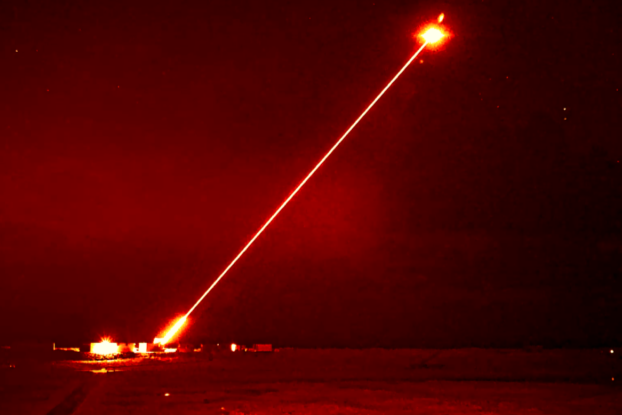The DragonFire laser directed energy weapon (LDEW) system, developed by the British Ministry of Defence (MoD) in collaboration with MBDA, Leonardo, and QinetiQ, has successfully conducted the UK’s inaugural high-power firing of a laser weapon against aerial targets.
During the trial at the MoD Hebrides Range, orchestrated by the UK Defence Science and Technology Laboratory (Dstl), the DragonFire system demonstrated its effectiveness by successfully destroying drones approaching from various directions and several kilometers away.
With a £100 million joint investment from industry and the UK Ministry of Defence, the DragonFire collaboration harnesses the expertise of British defense manufacturers to enhance layered air defense capabilities across land and maritime domains.
“This type of cutting-edge weaponry has the potential to revolutionise the battlespace by reducing the reliance on expensive ammunition, while also lowering the risk of collateral damage,” UK Defence Secretary, Grant Shapps said. “Investments with industry partners in advanced technologies like DragonFire are crucial in a highly contested world, helping us maintain the battle-winning edge and keep the nation safe.”
Affordable defense against attritable threats
Unlike a missile that can destroy a target by detonating nearby, the system uses an intense beam of light to neutralize the capabilities of a drone or subsonic missile by causing structural failure or destroying it completely.
Observation of current conflicts, such as the war in Ukraine or the attacks by Iran-backed Houthi rebels against international shipping lanes, convinced British officials of the need to develop a cheap but effective weapon to destroy attritable threats such as loitering munition. For example, the Sea Viper missiles recently fired by the British destroyer HMS Diamond to intercept Houthi drones in the Red Sea cost around £1 million (€1.165 million) each, compared to the laser’s operating cost of £10 (€11.65) per shot.
The United Kingdom is one of many nations to have developed such a capability. The US, Israel, France, and Russia among others have also reported the development of laser weapons as an affordable air defense method.
From June 12 to 14 2023, the French Navy, in collaboration with the Directorate General of Armaments (DGA) and the company CILAS conducted a test campaign for the HELMA-P system, another anti-drone laser weapon, aboard the FDA Forbin in the Mediterranean Sea.
Du 12 au 14/06, à bord de la FDA Forbin en Méditerranée, la @DGA, la Marine et la société CILAS ont conduit une campagne d’essais du système HELMA-P, arme laser de lutte anti-drones. L’intégration de drones aux opérations est une évolution majeure des conflits et du combat naval. pic.twitter.com/1Wy4G9P4Ds
— Marine nationale (@MarineNationale) June 20, 2023

